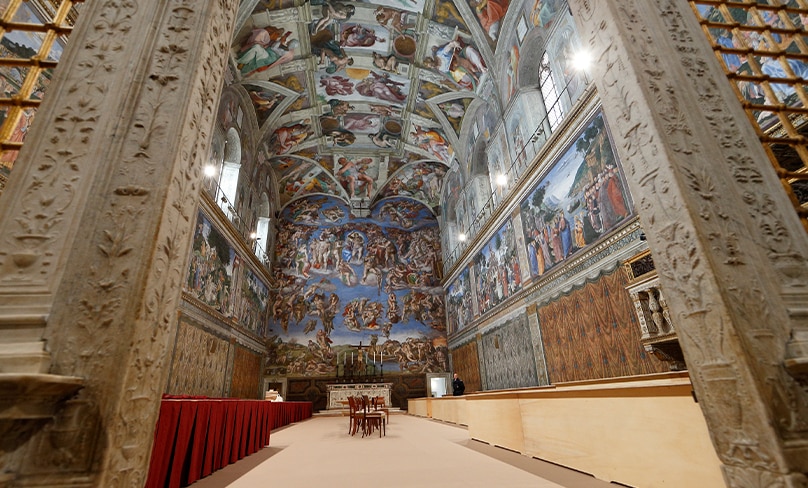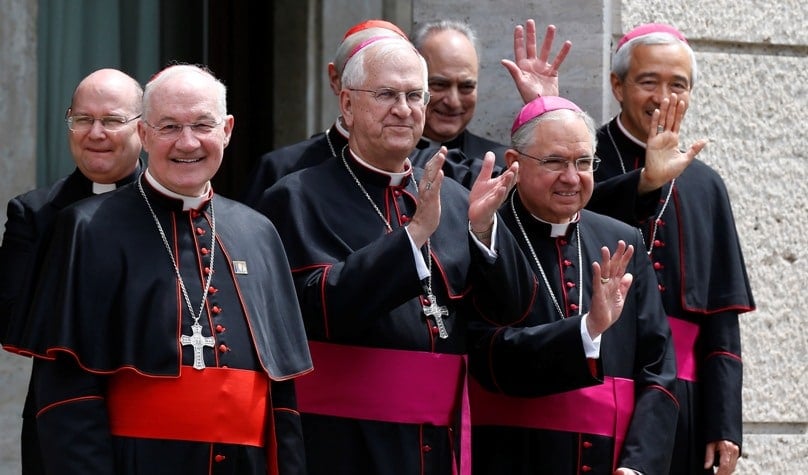
In Rugby League and Australian Rules football there is little more delicious than anticipating the annual draft of young talent, and now we have for Roman Catholicism a draft of not-so-young talent in Edward Pentin’s The Next Pope: The Leading Cardinal Candidates.
A journalist based in Rome reporting and commentating on Vatican affairs since 2002, Pentin the vaticanista (one who specialises in papal and Church affairs) has listed 19 cardinals who could be in the running at the next election for pope, those whom “I and others believe are currently papabili, that is, most likely to be elected pope”, and the choice certainly includes well-known names.
He does not say who the “others” contributing to the project are except to write that his work is based on the research of “a number of scholars”, professionals “independent, unaffiliated with any news group, ecclesiastical institution, social-change organisation”.
At the same time, Pentin has a well-earned reputation for sober reporting and analysis.
Jesuit Father Federico Lombardi, a former Director of the Vatican Press Office under Pope Francis and Pope Benedict XVI, is happy to recommend Pentin’s journalism for its “seriousness and balance” and “his commitment to verifying information”.
Nevertheless, any interpretation of belief and action means using criteria.
As we read on in The Next Pope, it becomes clear the key criterion for the author is what the Catholic Church – from its official documents – actually teaches, not interpretations that change that literal teaching.
And now, for the drum roll. In alphabetical order, the 19 papabili are: Cardinals Angelo Bagnasco, Raymond Burke, Dominic Duka, Willem Eijk, Peter Erdo, Gerhard Muller, Wilfrid Napier, Sean O’Malley, Marc Ouellet, Pietro Parolin, Mauro Piacenza, Malcolm Ranjith, Gianfranco Ravasi, Robert Sarah, Christoph Schönborn, Angelo Scola, Luis Tagle, Peter Turkson and Matteo Zuppi.
This is not a true sporting draft – Pentin does not rank the talent or pick a winner from the 19.
For starters, there are to date another 103 cardinals eligible to vote from whom a dark horse could come; in recent history, Pope John XXIII (1958-63) and Pope John Paul I (1978) were not considered papabili.
And, on a lighter note, Pentin may have given the ‘kiss of death’ to the 19 as the famous dictum of the Roman citizenry over the centuries is that ‘he who enters the conclave as pope, leaves it as a cardinal’!

The biographies of the cardinals aim to be a “tool by which a future pope may be known in regards to what matters most” – sanctifying, governing and teaching the Church, the People of God.
For example, for the office of sanctifying, the author and his researchers “focus on how a cardinal celebrates Holy Mass; what devotions and prayers he favours publicly; what means he takes to lead others to holiness”.
Governing covers administration of a diocese or a Vatican curia (department).
A cardinal’s teaching are often dealt with at length “because it best reveals the true character and belief of the individual” on crucial topics such as liturgy, moral teaching, right-to-life issues, priestly celibacy, migration and women deacons, along with many other policy questions. The thoroughness of research can be seen in the 2,278 references cited!
There are also useful short explanations of matters surrounding the election of a pope: a brief history of the cardinalate back to the sixth century AD and its earlier origins; the roles of present-day cardinals; the procedure of electing a pope; qualities of a pope, citing particularly St Peter, St Bernard of Clairvaux (1090-1153 AD) and St Robert Bellarmine (1542-1621).
So there is no question that The Next Pope is a useful resource for any lay vaticanista.
What motivated Pentin and associates to prepare the dossiers? He says they acted as “it’s usually not just the public who have little or no knowledge of a prospective pope” but “perhaps, surprisingly”, neither do the cardinal-electors, some of whom play an “enormous role, but sometimes unknown, role in the Church and the world”.
Their work, he writes, is not meant to not be “a commentary on any popes or their works, whether past or present”.
Yet it is still the case that Pope Francis did attract criticism early in his pontificate and critics explained his election on the presumption the cardinal-electors had little or no knowledge of the Argentinian and, if they had, they would have chosen another cardinal.
The question as to whether the cardinals were really unaware, however, needs to take into account that Cardinal Bergoglio did have a high profile among cardinals outside Latin America.
According to the diary of an anonymous cardinal leaked five months after his election, he was catapulted to prominence in the 2005 conclave, coming second to the eventual winner, Cardinal Ratzinger, in all four conclave votes.

Cardinal Bergoglio’s election in 2013 clearly did not take place with “little or no knowledge” of the prospective pope.
If cardinal-electors need more information on the papabili another question arises: why are the profiles made public in The Next Pope when the Catholic public does not have a vote? It is the voting cardinals only who need the detailed research.
Also, the conclave rules insist cardinals reject any organised outside lobby to influence their vote – a result of kings and princes, even the Roman mob, controlling votes at times at least before the Council of Trent (1545-63).
When does an undoubtedly well-intentioned book full of useful information unintentionally become a weapon for divisive debate and lobbying among non-cardinals in the lead up to a conclave?
However, there is one group outside the cardinalate who sorely need a copy of The Next Pope: the horde of journalists and commentators, including Catholics who should know better, descending on Rome for the next papal election.
Their prognostications will at least start from a base of some knowledge of what is taking place before them rather than blissful ignorance.
A second edition is foreshadowed.
This is needed as nine of Pentin’s 19 are 75 years of age and over and, having turned 80, will be ineligible to join the conclave to vote or be elected.
A second edition could also add to the draft other talented cardinals ‘on the periphery’ who did not make the first cut – Cardinal Bo of Burma, for example, who is president of the Federation of Asian Bishops’ Conferences and a strong voice for Asian Catholics, could be an alternative Asian candidate to Cardinal Tagle of the Philippines who some cardinals might think too progressive in his beliefs.
At the very least, readers of Pentin’s The Next Pope, will find much food for thought and prayer, especially for the more than 100 cardinals who will vote in the man who will be Pope, and as the great St Catherine of Siena (1347-1380) taught, “sweet Christ on earth”.
The Next Pope: The Leading Cardinal Candidates. Edward Pentin. Paperback (704pp) and eBook. Sophia Institute Press. www.sophiainstitute.com.
